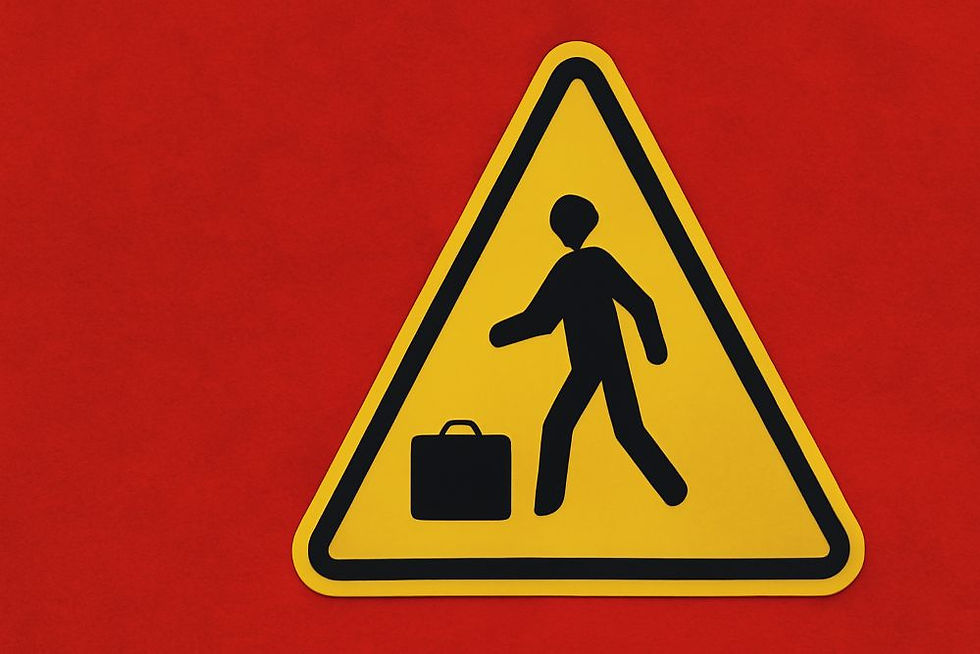Trump Tax Bill Impact on Workers and National Debt
- Admin
- Jul 1
- 4 min read
Updated: Jul 2

Introduction: A Senate Victory, But at What Cost?
In a dramatic 51-50 vote, the U.S. Senate narrowly passed President Donald Trump’s signature domestic policy bill his most ambitious legislative push since his return to the White House. Marketed as a tax relief package for working Americans and a boost to border security and defense, the bill has stirred national debate and division. With Vice President J.D. Vance casting the tiebreaking vote, the legislation now heads to the House, where its fate and America’s fiscal trajectory hangs in the balance.
While Republicans hail the bill as a transformational step toward prosperity and security, critics warn it may deepen inequality, gut the social safety net, and explode the national debt.
Merits of the Trump Domestic Policy Bill
1. Tax Relief for Middle-Class Americans The bill extends the 2017 tax cuts, set to expire by year-end, preserving lower tax rates for individuals and families. Notably, it includes deductions for overtime and tip income, and an expanded child tax credit—policies that resonate with working-class voters.
2. National Defense and Border Security Boost It allocates over $300 billion for national priorities $175 billion for border enforcement and $150 billion in additional military spending, reinforcing Trump's promise of “law and order.”
3. Incentives for Domestic Production The bill includes tax breaks for U.S.-manufactured vehicles and increases the state and local tax deduction cap from $10,000 to $40,000, offering relief to residents in high-tax states and encouraging American industry.
4. Senior Tax Relief An additional $6,000 deduction is introduced for seniors receiving Social Security, aimed at easing their tax burden and addressing rising living costs.
Demerits and Controversies
1. Cuts to Medicaid and SNAP The bill includes historic reductions in Medicaid $1.1 trillion over a decade affecting millions of low-income Americans. The Congressional Budget Office (CBO) estimates that 11.8 million people could lose health coverage by 2034. New work requirements for Medicaid and food stamps (SNAP) may disproportionately impact vulnerable populations, including the elderly and disabled.
2. Ballooning National Debt Despite Republican claims of fiscal responsibility, the CBO projects the bill will add $3.3 trillion to the national debt over 10 years. Independent analysts say the real cost may exceed $5.3 trillion when interest and expiring tax cut renewals are considered.
3. Undermining Clean Energy Progress The bill reverses or reduces Biden-era clean energy incentives targeting wind, solar, EVs, and hydrogen projects jeopardizing climate goals and long-term sustainability efforts.
4. Temporary Tax Relief with Long-Term Risks Several tax provisions including those on tips, overtime, and Social Security expire in 2028, requiring future extensions to avoid abrupt tax hikes. Critics call this a “budget gimmick” that hides the bill’s true cost and defers fiscal pain.
5. Social Security Insolvency Risk By slashing federal revenue, the bill further endangers the solvency of Social Security, already projected to run short by 2033. Analysts argue the cuts make future bipartisan solutions harder, risking benefit reductions for tens of millions of retirees.
Political Fallout: Divided GOP and High-Stakes Midterms
The bill fractured Republican unity. Senators like Rand Paul, Lisa Murkowski, and Thom Tillis voiced strong objections. Tillis, after facing Trump’s ire, announced he would not seek re-election, calling the bill a betrayal of Trump’s own campaign promises on protecting Medicaid.
Senate Majority Leader John Thune worked late into the night to win over skeptical Republicans by including last-minute concessions like a $25 billion fund for rural hospitals to soften Medicaid cuts.
House passage remains uncertain. Hardline Republicans are demanding more spending cuts, while moderates fear voter backlash over healthcare reductions.
Constitutional Process Questioned
The GOP’s use of the reconciliation process to bypass filibuster rules raised alarm. Traditional Senate budget rules were broken to justify long-term tax cuts by declaring their cost “zero.” Economists say this precedent undermines the very purpose of deficit controls and could erode market trust.
Fact Check Summary
Claim: “If it’s not approved, your taxes go up by 68%.” Reality: False. Average increase would be around 7.5%.
Claim: “No tax on tips, overtime, or Social Security.” Reality: Exaggerated. These deductions are temporary and income-capped.
Claim: “Largest tax cut for middle-class Americans in history.” Reality: False. COVID stimulus (2021) offered larger middle-class relief.
Economic Implications: Is a Fiscal Crisis Looming?
Economists warn that the bill could mark a turning point for America's debt sustainability. With debt levels already at record highs, permanent tax cuts without offsets could spook bond markets, raise interest rates, and increase borrowing costs for future generations.
Jessica Riedl of the Manhattan Institute called it “the most expensive bill since the 1960s.” If Social Security funding runs out by 2033 and revenue keeps falling, lawmakers may face a crisis of confidence and economic instability.
Conclusion: A Generational Gamble
Trump’s “big, beautiful bill” delivers on campaign promises, particularly for working-class voters and business-friendly Republicans. But the price tag, social costs, and long-term implications raise critical questions: Can the U.S. afford this level of tax relief without fundamental structural reform? And what happens when the bill’s temporary wins give way to permanent fiscal consequences?
Call to Action:
What do you think?
Is this bill a tax revolution or a fiscal time bomb?
Should health programs be sacrificed for tax relief?
Can America thrive with this level of debt?
Sound off in the comments. 🔁 Share this with your network. 📥 Subscribe for updates on U.S. policy, economy, and democracy.
Please this article: “What the Congo–Rwanda Peace Deal Really Means for Africa”









Comments